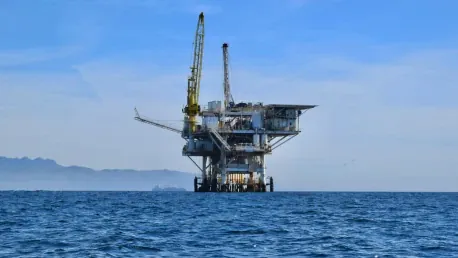President Joe Biden’s recent executive action aims to ban new offshore oil and gas drilling across a vast expanse of more than 625 million acres of U.S. coastal waters. This directive includes the entire East Coast, the eastern Gulf of Mexico, and the Pacific Ocean off Washington, Oregon, and California. Additionally, parts of the North Bering Sea in Alaska are covered under this new regulation. Biden’s decision aligns with his administration’s broader goals to promote healthy oceans and expedite the nation’s transition to a clean energy economy. Citing the climate crisis as a critical driving force behind these protections, the President’s move has undoubtedly created ripples in the industry.
Immediate Impacts and Response
Limited Impact Amid Existing Protections
The immediate effect of Biden’s ban appears limited primarily because it encompasses areas with minimal oil and gas exploration activities or regions already under existing protections. Historically, these zones have not seen significant commercial interest or activity in terms of oil and gas drilling. For instance, the Atlantic coast from North Carolina to Florida, previously subjected to a 10-year moratorium on drilling imposed by former President Donald Trump in 2020, falls under areas protected by Biden’s recent order. This moratorium is set to continue under the new ban, further solidifying the overall lack of immediate substantial impact on U.S. oil production and offshore gas production.
Furthermore, Biden’s executive action does not affect new drilling in the central and western Gulf of Mexico, regions that hold significant importance for U.S. oil production and offshore gas activities. These areas remain crucial for maintaining the country’s energy supply, generating concerns about how the ban might shape the future investment and exploration strategies of energy companies. The limited exploration activities in the newly protected areas indicate that the short-term economic implications might not be as profound as initially perceived. However, the long-term effects on investment appetite and the industry’s strategic planning could be more significant.
Trump’s Pledge to Reverse the Ban
President-elect Donald Trump has already vowed to reverse this ban at the earliest opportunity upon taking office. Known for his staunch support of increasing domestic fossil fuel production, Trump’s immediate response to Biden’s decision has stirred anticipation and speculation around potential policy reversals and their broader implications. However, reversing the ban is not a straightforward task. Legal complexities and legislative hurdles could pose significant challenges to Trump’s intention. The New York Times pointed out that Biden invoked the 1953 Outer Continental Shelf Lands Act, a powerful legal instrument that grants the President broad authority to withdraw federal waters from future oil and gas leasing activities.
For Trump to undo this action, he would need Congress to amend the law or potentially face substantial legal battles in court. Given the polarized political climate and the Democratic control of key legislative bodies, enacting such amendments would be an arduous undertaking, fraught with political maneuvering and contention. This scenario underscores the broader ideological battle between the two administrations, with Biden’s environmental protection policies clashing starkly against Trump’s ambitions for expansive fossil fuel production. The unfolding legal and legislative drama around the ban reversal will undoubtedly shape the discourse on U.S. offshore drilling policies in the coming months.
Environmental Initiatives and Future Challenges
Promoting Healthy Oceans and Clean Energy
Biden’s executive order represents a significant stride in his administration’s commitment to environmental protection and the clean energy transition. By safeguarding extensive coastal areas from new offshore drilling activities, the administration aims to mitigate the detrimental environmental impact caused by such operations. Offshore drilling is often associated with risks including oil spills, which can have devastating effects on marine ecosystems and biodiversity. Protecting these areas will likely contribute to preserving marine habitats, promoting healthier oceans, and enhancing the resilience of coastal communities.
Furthermore, the ban is symbolic of the Biden administration’s broader environmental initiatives, including reducing greenhouse gas emissions and combating climate change. By limiting new fossil fuel production activities, the administration hopes to accelerate the shift towards renewable energy sources. This policy aligns with international commitments to address climate change, aiming for a significant reduction in carbon footprints. However, achieving these goals would require substantial investments in clean energy infrastructure, technological advancements, and supportive regulatory frameworks, which can collectively drive the transition from fossil fuels to renewable energy sources.
Legal and Industry Implications
President Joe Biden has recently signed an executive order to prohibit new offshore oil and gas drilling in over 625 million acres of U.S. coastal waters. This extensive ban affects the entire East Coast, the eastern portion of the Gulf of Mexico, the Pacific Ocean off the coasts of Washington, Oregon, and California, as well as parts of the North Bering Sea in Alaska. This move aligns with Biden’s administration’s goals to foster healthy marine ecosystems and expedite the nation’s shift towards a clean energy economy. The initiative is driven by the urgent need to address the climate crisis, which the President has identified as a vital reason for these protective measures. The action has already made significant waves within the oil and gas industry. By prioritizing environmental health and clean energy, Biden is aiming to leave a lasting impact on the country’s energy policies and its approach to combating climate change, positioning the United States as a leader in global sustainability efforts.









